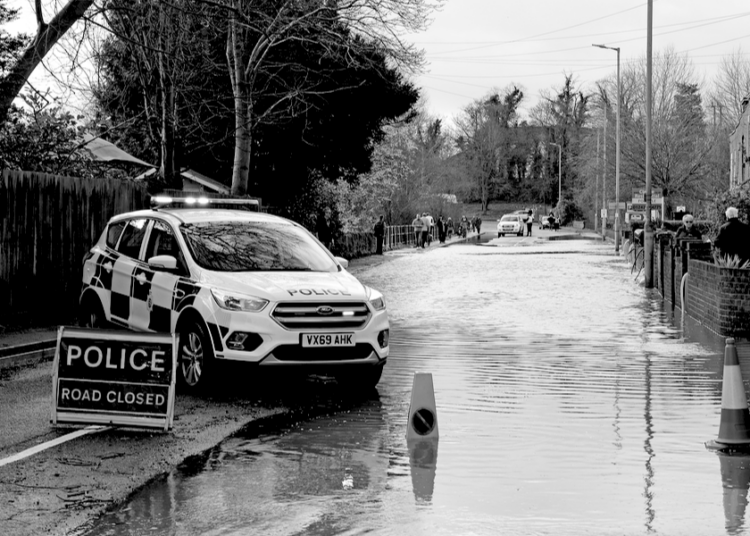AS THE waters recede, pretty pictures of Tewkesbury Abbey surrounded by floodwaters have been replaced by riverside towns under water. The usual suspects are blathering about climate change or rewilding. As is too often the case, people are fitting observations to their pet theories rather than developing theories from tested facts.
The medieval masons who build Tewkesbury in 1102 had the good sense to site it on a mound some 20 feet above the level of the confluence of the rivers Severn and Avon. In the 922 years since then it has been flooded just twice, once in 1760 and again in 2007. Severe weather events are not new.
Last week’s pictures were of a flood plain doing its job, filling with water and thus protecting towns and cities downstream. That flood plains were unable to protect Henley-on-Thames, parts of London and St Neots is less to do with the amount of rainfall and more to do with idiotic housebuilding on floodplains and the inadequacies of flood protection.
There are two major types of flooding – river and coastal. The former is caused by heavy rain, and the main mitigation is to use flood plains. In some places it may be necessary to build alternative water courses and storm drains. There are also steps that can be taken to slow the rate at which water runs off upland areas. Rising sea levels are the primary cause of coastal flooding. The solution, as any Dutchman can tell you, is to build sea walls. These will also guard against the effects of countries sinking due to tectonic plate movement. Reducing the impact of storm surges caused by strong winds at high tides may need additional river defences such as the Thames Barrier. Flooding risks can be removed by relatively cheap civil engineering.
The government currently spends £1billion a year on flood defences, up from £777million in 2018. As the Office for National Statistics link notes, ‘There is currently a lack of readily available data to create a consistent and coherent time series across the UK; this article presents the available data to help promote discussion on this important topic.’ The Environment Agency and its predecessors have been managing flood defences by digging ditches since before William the Conqueror arrived, so it’s impressive indeed that the Blob can’t find crucial data.
On the other hand, it’s very easy to discover that in same period this government spent £4.7billion on Net Zero. This year it will spend £7.7billion. Even if Net Zero were achievable and affordable (it’s neither, as TCW readers know) it would not solve the current flooding problems: reducing global CO2 emissions by the UK’s 1 per cent by 2050 won’t change this year’s rainfall, or next year’s, or indeed the rainfall in 2051.
Only this government would spend £8billion on something that won’t work and a comparatively miserly £1billion on something that does. Only Sir Keir Starmer’s Labour Party, nominally an opposition, would not question it. But then this is a government that, until last week, had Chris Skidmore running its energy policy. His hissy fit about allowing more exploration of the North Sea for oil and gas because it upsets Greta’s gang overlooks the inconvenient reality that 77 per cent of the UK’s energy comes from oil and gas. Wind and solar deliver just 7 per cent of the UK’s energy. Unless and until someone can build ten times the number of nuclear power stations and wind farms we’re utterly reliant on oil and gas to stay alive. Presumably Mr Skidmore would rather we rely on OPEC and the US for energy, sometimes paying through the nose for it, than find and extract the oil and gas that we own.
Thankfully it’s an election year, so we have a chance to eject idiots like Skidmore and replace them with those who are prepared to question the deranged and disastrous policies that the past decades have inflicted upon us. There’s only one party that questions Net Zero; as yet it’s not represented in Westminster but we, the electorate, can change that too.

